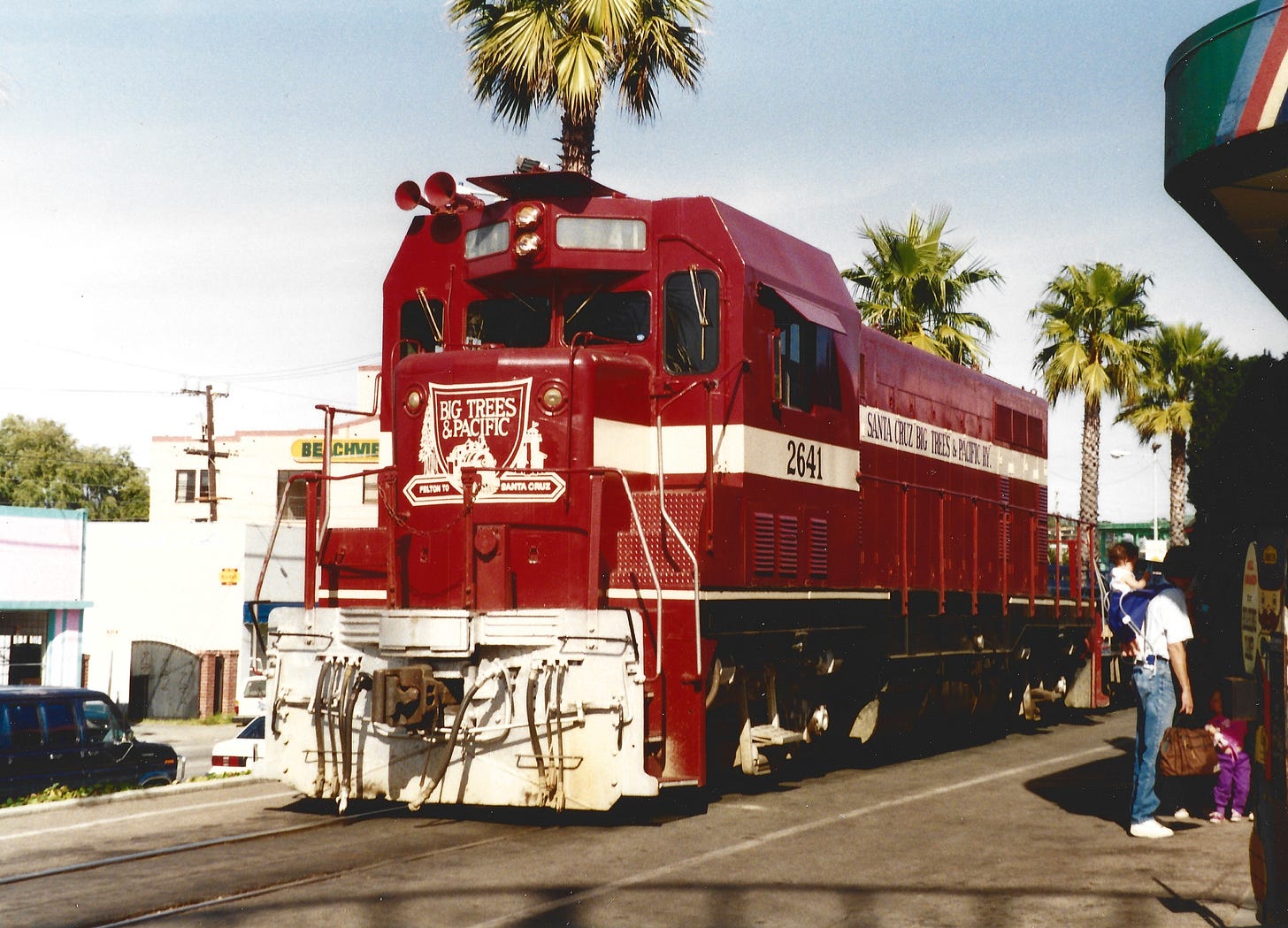
In limited partnership with Fairbanks, Morse & Company in the mid-1940s with the fabrication of its Erie-(Pennsylvania)-built type of locomotives (of which there were 111 of these distinctive locomotives in all), the General Electric Company was no stranger to diesel locomotive manufacturing. In fact, not only had GE made a name for itself by manufacturing diesel locomotives and electrical components such as traction motors and the like used in railway locomotives, but it affirmed its position as an established leader in the electrical component trade.
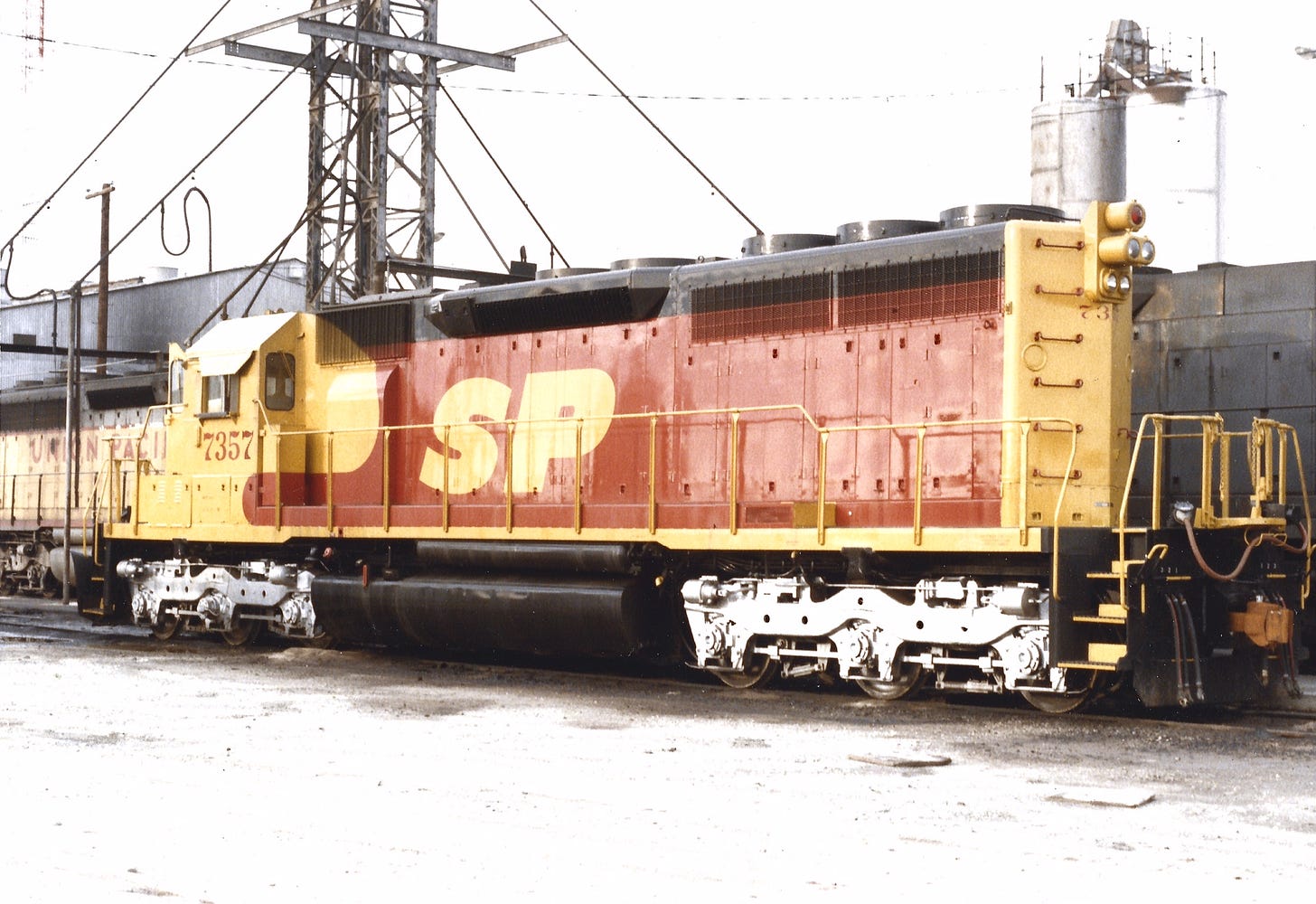
As a consequence of the direction the diesel-locomotive-production business was headed, GE re-entered the scene in 1960 with its “U-series” locomotives.
Coming on board with its own line of supercharged, four-cycle “Cooper-Bessemer” engines, GE’s first full-scale production models rated at 2,500 h.p., complete with four driving axles powered by the Cooper-Bessemer prime movers, were classed as the U25Bs.
Meanwhile, Electro-Motive Division already having introduced its “E” and “F” lines of locomotives, was by 1960 already in its fourth decade of locomotive production and involved in the locomotive manufacturing trade’s “second generation”. With F-M, Alco, Baldwin-Lima-Hamilton and others already out of the picture or soon to vacate the field, locomotive manufacturing now lay in the hands of two principal builders; namely, EMD, a division of General Motors, and General Electric.
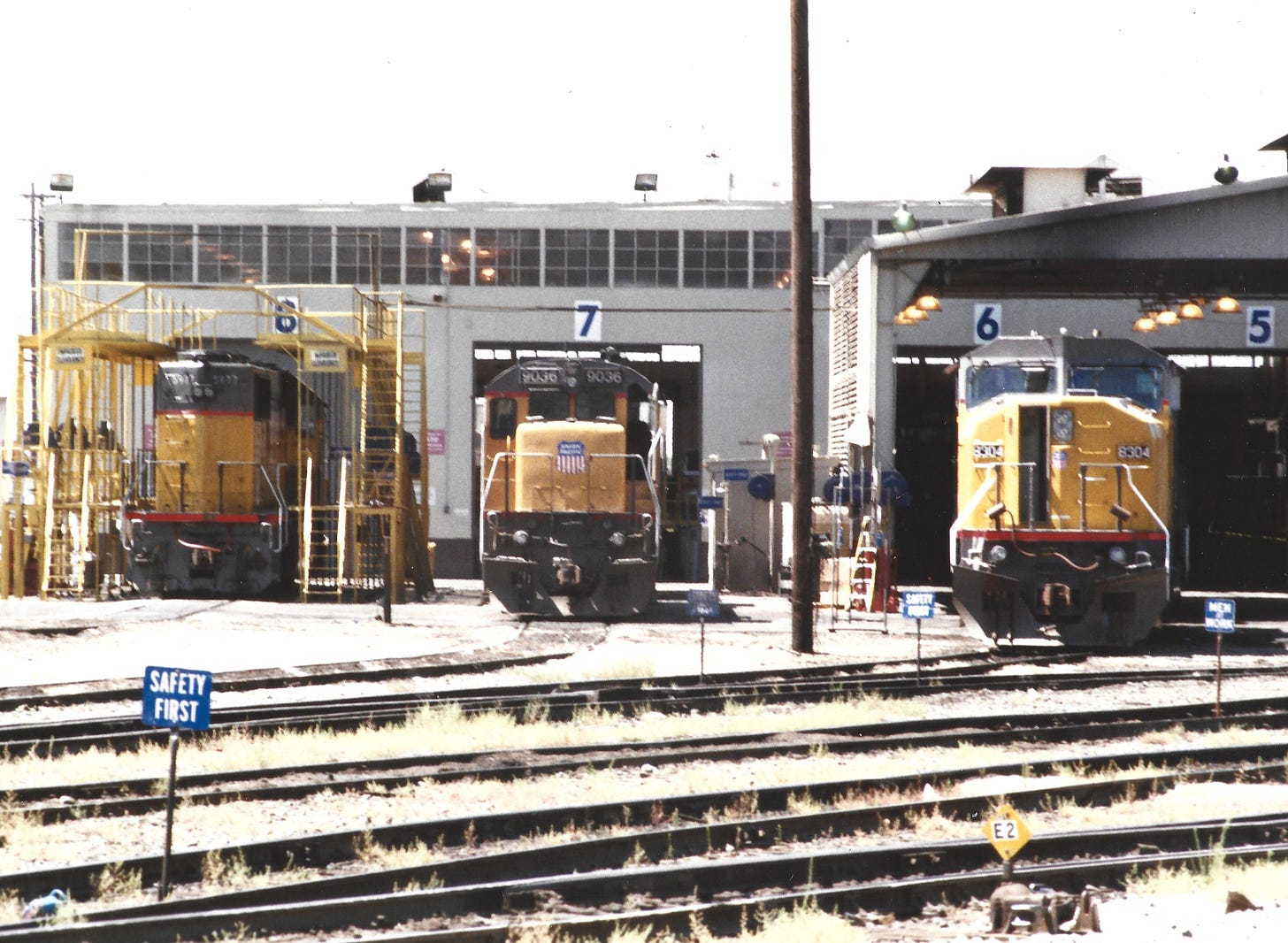
By 1972, EMD and GE were both quite competent at building diesel-electric locos. Products mass-produced at EMD’s La Grange, Illinois facility, were consequently classed “Dash-2” locomotives, due to their electrical upgrades which essentially replaced miles of hard wire located throughout a typical unit, with more modern heavy-duty printed circuit boards mounted in electrical cabinets within the crew cabs.
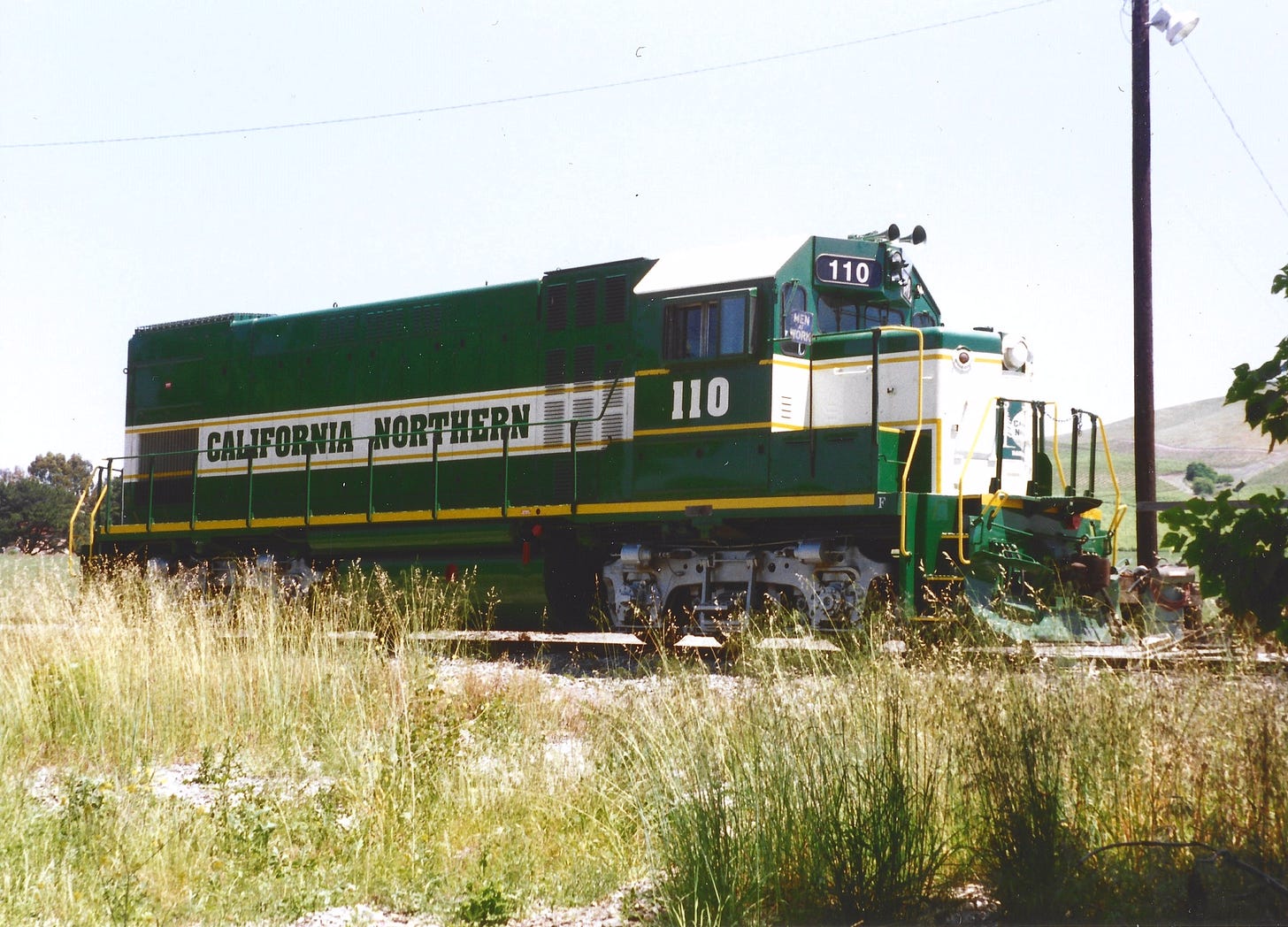
The model being released from GE’s Erie, Pennsylvania shops about that same time, was the U23B. Typical of GE practice, the number in its model designations referred to the amount of horsepower (minus a couple of zeros) the average unit could deliver. For instance, the U23B had 2,250, or essentially, 2,300 horses under the hood. It wasn’t long before both EMD and GE would transcend those limits producing locomotives capable of delivering a total of 4,000 horsepower to all four driving axles, typical of GP60s or Dash 8-40Bs being built during the 1980s. The exception to this was EMD’s SW1500 switching locomotives used on a number of carriers in switching assignments, which supplied 1,500 horsepower to the driving axles. Both manufacturers were experiencing a boon in locomotive production and sales with a number of American railroads rostering numbers of locomotives supplied by each builder. Still there were rail concerns whose preference for GE products outweighed their penchant for those of its rival and vice versa.
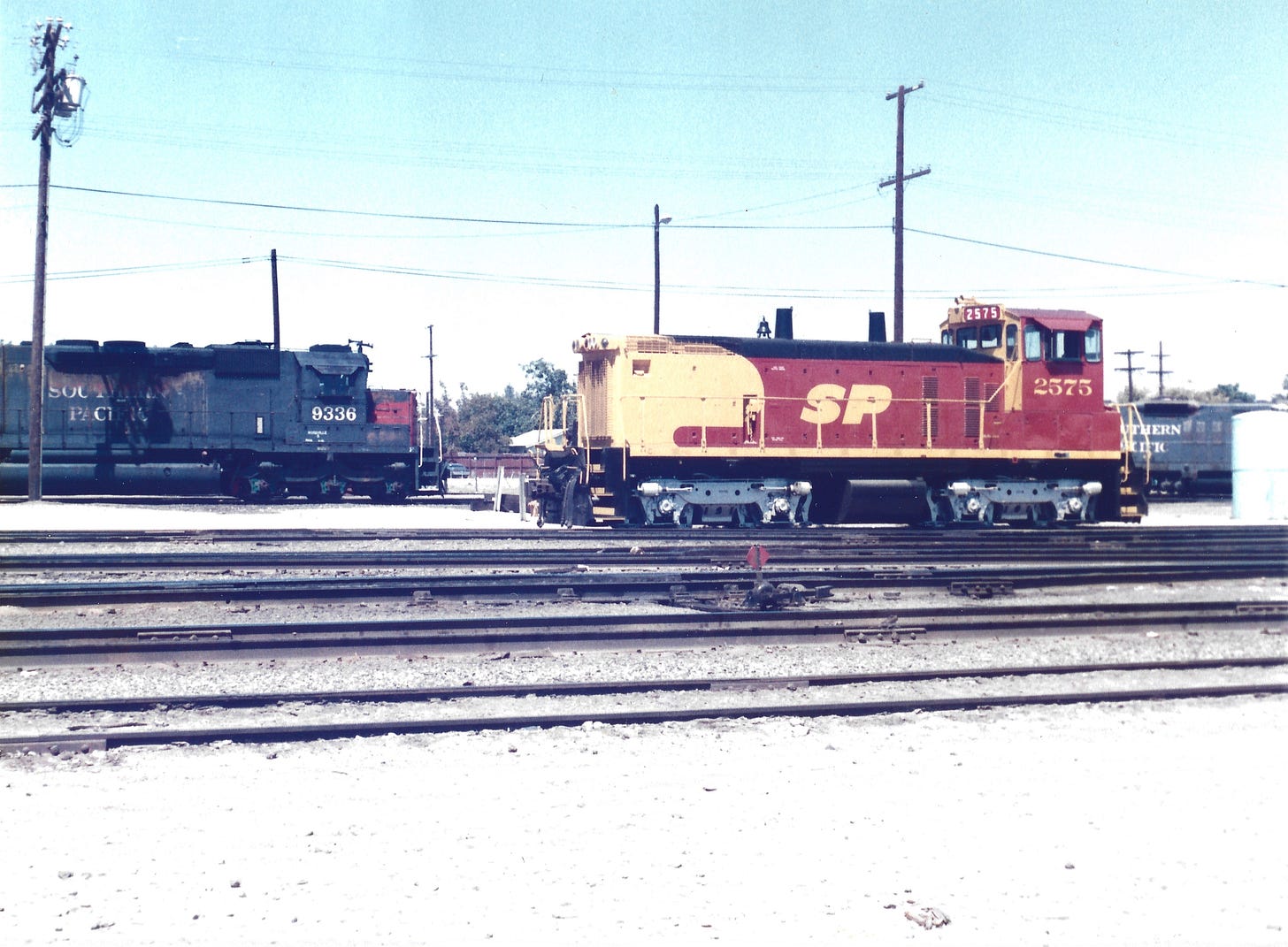
In 1989, the introduction of the SD60M used extensively by the Union Pacific, began a new chapter in American locomotive building. The introduction of the “North American-”, “comfort-” or “safety-” cab concept, first appearing on the Union Pacific on Jan. 10, 1989 in the form of SD60M No. 6085, caught on big-time with railroads such as Burlington Northern and Atchison, Topeka & Santa Fe, both embracing the idea as well. GE was already at work on its own version of locomotives employing the use of similarly designed safety cabs. Although initially dissatisfied with General Electric’s version, which it called the “North American Cab,” UP along with many other rail carriers became steady if not devoted customers of GE buying vast quantities of Dash 8-40CW and Dash 9-44CW type locomotives.
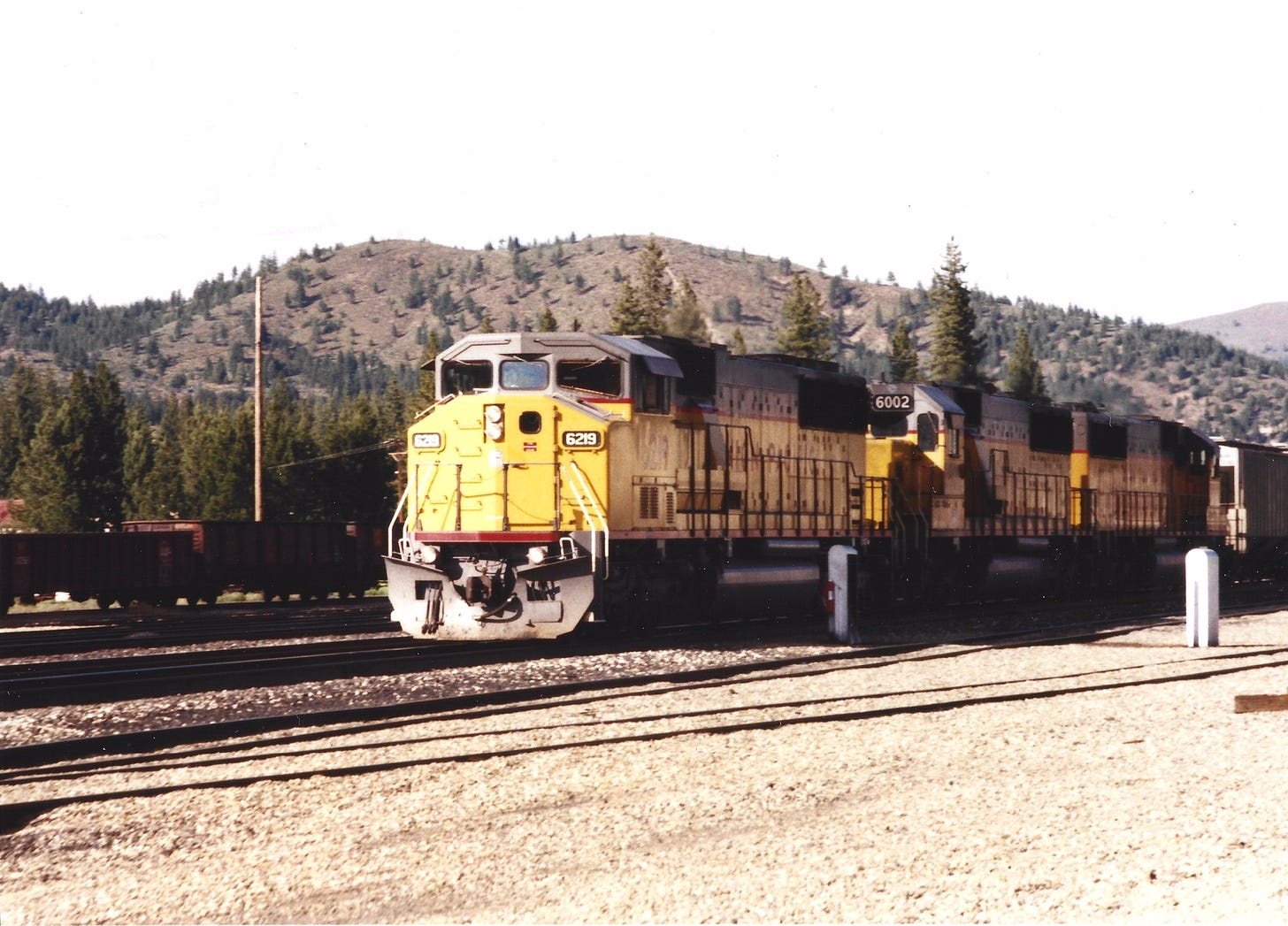
Meanwhile, Atchison, Topeka & Santa Fe took delivery of 163 GP60M models all which were on the property in 1990, and a subsequent order was placed with GE for a significant number of Dash 8-40BW units numbered in the 500 series. When all was said and done, Santa Fe would become a captive GE customer buying a substantial quantity of six-axle locos as well. Burlington Northern, apparently satisfied with the SD60s, remained predominantly an EMD railroad, that is, where big motive power was concerned. It became quite apparent, that for many railroads, the days for the standard cab-equipped hood units were numbered. As a result, many locomotives bought after 1990, would be supplied with safety cabs. In contrast, locomotives outfitted with the safety cabs began to swell compared to the number of operating road diesels not-so-equipped. This was done through procurement of new locomotives and through disposition and retirement of older ones.
For commuter and intercity passenger services, several models come to mind.
First, there are the utilitarian F40PH locomotives used on a number of assignments held by Amtrak, Caltrain (San Francisco), MBTA (Boston), Metra (Chicago) and New Jersey Transit, just to name a few. Then there are the F59PH and F59PHI locomotive models that were scattered about in various sections of the U.S. working for Amtrak and Metrolink (California). The one thing all of these locomotives had in common, was that they were all EMD-assembled products. To a limited extent there are still a handful of EMD-made FP7s, F9s, FL9s, E8s and E9s out and about here and there, as well as a few Alco FA and PA “covered wagons” (as they are affectionately known within the railfan community) holding down assignments on American high iron, but their employment or deployment (take your pick) as mainline passenger power has practically all but dried up. For a long while there were derivatives of GP39 models still floating around, namely, the GP39H-2s used by Maryland Area Rail Commuter or MARC, but this may no longer be the case.

For the General Electric devotees, there are the P30, P32AC-DM (Dual Mode), AMD-110DP and AMD-103 “Genesis” series locomotives. Almost exclusively held captive to “Sunset Limited” duties were Amtrak’s P39CH passenger motors. Amtrak’s P32s, or more precisely, Dash 8-32BWHs and numbered 503 through 517 while under Amtrak employ, these engines were utilized throughout the U.S. in a number of venues, while the 2051 and 2052 (formerly 501 and 502, respectively) on Amtrak’s “California” trains, were confined to the Golden State pulling or pushing a number of trains.
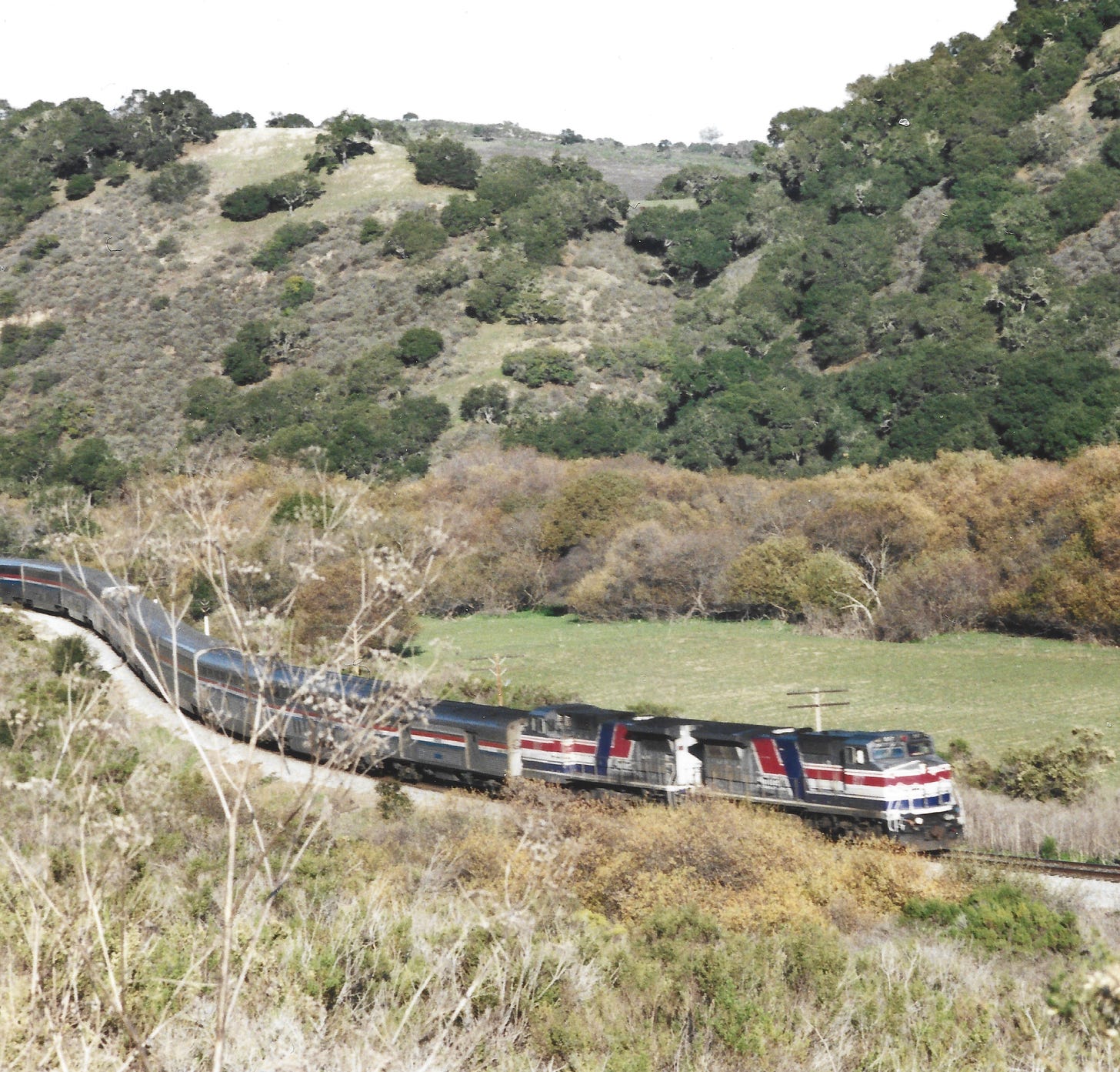
AMD-103 “Genesis” locomotives were right at home working for Amtrak systemwide, while the P32AC-DMs or AMD-110DPs (as GE referred to them) operated in commuter services on Metro North iron in the state of New York.
The only other entrants into the non-electric passenger locomotive market back in the day as well were Rohr’s “Turboliner” series and United Aircraft’s “Turbo” trains. All have since been retired, though two Rohr “Turboliners” were at one point rebuilt and subsequently tested on Amtrak’s Empire Corridor in upstate New York.
Today we hear names like Airo, Charger and others, products of such overseas-based companies as Alstom, Bombardier and Siemens to name but a few.
Updated: Aug. 6, 2025 at 9:35 a.m. PDT.
All material copyrighted 2025, Alan Kandel. All Rights Reserved.




